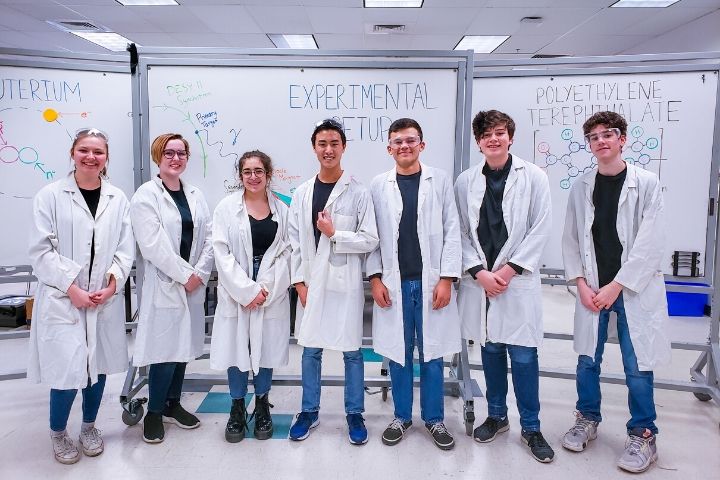As large plastic items degrade, smaller pieces can break off. So-called microplastics also have been added to some health and beauty products for exfoliation. Small enough to pass through filtration systems, microplastics can end up in bodies of water and harm marine life.
Seven students from Skyview High School’s Science, Math and Technology magnet program have developed a proposal for tackling this problem, and they now have a chance to earn an opportunity to take the next step.
Megan Sarkissian, Natalie Humber, Broc Olafson, Charlie Tripp, Lili Boyer-Quick, Larry Huang and Van Higgs worked all school year under the guidance of teacher Nate Macon. Their proposal lays out a plan for testing the dissociation, or breakdown, of plastic sheets in a noninvasive manner using a high-powered electron beam.
“Partially dissociating these microplastics increases surface area, which may allow bacteria and other microorganisms to more quickly decompose these polymers,” they wrote. “Our research could be applied to create practical, noninvasive, microplastic-eliminating technology that could ultimately rescue marine habitats across the globe.”
The students submitted their proposal to an elite science competition in which high schoolers from all over the world vie for an opportunity to conduct research with some of the leading minds in the field of particle physics. Skyview’s Team Subatomic Storm was one of just 23 teams from 17 countries shortlisted for the 2020 Beamline for Schools competition sponsored by CERN, the European Organization for Nuclear Research.
If ultimately named one of the top two teams in this year’s competition, Subatomic Storm will earn a trip to one of the largest particle physics labs in Germany to conduct their experiment.


